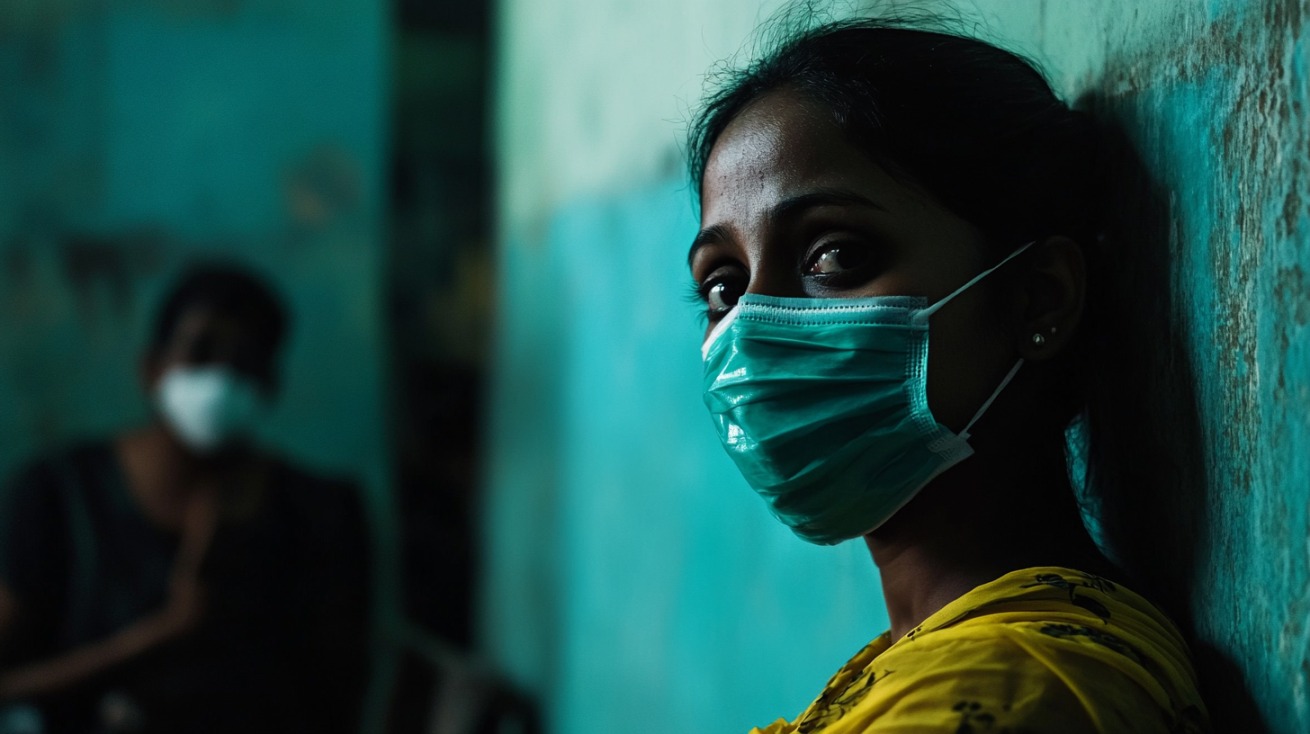Meningitis can be a tough condition. The term refers to inflammation of the meninges, which are the membranes protecting the brain and spinal cord. Infections—bacterial, viral, fungal, or parasitic—are the main triggers, though there’s also a non-infectious version.
Anybody can be affected, yet certain groups, like newborns and young adults, are at higher risk. Bacterial meningitis tends to be the most severe. Without quick intervention, it can turn life-threatening in a day.
Viral meningitis, on the other hand, usually isn’t as harsh and often resolves without major medical intervention. Vaccination has made an enormous difference, but there’s still work to be done worldwide.
The ultimate goal? Defeat meningitis altogether by improving prevention, diagnosis, and care.
Who Is More Vulnerable?
Not everyone faces equal odds. According to the CDC studies, certain demographics deal with bigger risks.
- Babies and very young kids: They’re vulnerable due to developing immune systems. Group B streptococcus is a common bacterial culprit in newborns.
- Teenagers and young adults: Meningococcal disease, which can strike out of nowhere, is a serious threat. Close living quarters in college dorms or military barracks can facilitate the spread.
- Older adults: Pneumococcal disease becomes a concern in later life.
- Individuals with compromised immunity: HIV-positive persons, or those on immunosuppressants, are susceptible, particularly to fungal infections like cryptococcal meningitis.
- Pregnant women: Listeria can affect expectant mothers. It’s often linked to unpasteurized foods or undercooked meats.
Crowded spaces—think bustling dorm halls or child care centers—boost the odds of transmission. Germs spread easily in cramped environments, making quick treatment and prevention essential.
Main Causes
Inflammation of the meninges can come from several angles. It’s important to grasp how each type differs.
Bacterial Sources
Bacterial meningitis is a major medical emergency. According to the World Health Organization, organisms like Neisseria meningitidis (meningococcus), Streptococcus pneumoniae (pneumococcus), Haemophilus influenzae, and Streptococcus agalactiae are usual suspects.
Meningococcal disease stands out for its swift progression—it can overwhelm a person in a single day if not addressed. There’s a chilling statistic: around one in ten cases of bacterial meningitis ends in death, and among those who survive, roughly one in five may face complications such as hearing loss or neurological issues.
It’s a wake-up call to many, underlining the urgent need for awareness and robust vaccination strategies.
Viral Sources
Viruses are a more common cause, with enteroviruses playing a major role. The Cleveland Clinic notes that viral meningitis often begins with symptoms of a viral infection, such as fever, general malaise, headache, and muscle aches.
Subsequently, individuals may develop a headache and a stiff neck, making it difficult or impossible to lower the chin to the chest.
Those who have encountered viral meningitis often describe the experience as frightening at first, then more of a grueling but manageable ordeal.
Fungal and Parasitic Sources
Less common, but not to be overlooked. Fungal meningitis frequently appears in immunocompromised individuals, especially those living with HIV. According to Clinical Info, Cryptococcus is one example.
Parasitic infections, such as amoebic meningitis from fresh water exposure, are extremely rare but can be dire. These versions might slip under the radar, so vigilance remains important in high-risk situations.
Spotting Alarming Symptoms

A sudden onset of certain signs might point toward meningitis.
- Severe headache that feels different from a typical headache.
- Neck stiffness, making it painful or impossible to tilt the head forward.
- High fever that’s persistent and intense.
- Sensitivity to light.
- Nausea and vomiting.
- Altered mental state, confusion, or extreme drowsiness.
Babies can’t always voice discomfort, so watch for irritability, poor feeding, or an unsettling cry that seems off.
A bulging soft spot (fontanelle) might also be a warning sign in infants. When anything looks suspicious, it’s wise to seek medical care quickly. Waiting can lead to scary outcomes.
How Doctors Diagnose It
An accurate diagnosis often begins with a clinical exam, checking for the classic neck stiffness, rashes, or neurological deficits.
A lumbar puncture (sometimes called a spinal tap) is key. It involves extracting fluid from around the spinal cord to look for infection markers.
- Blood tests: Check for bacterial presence or specific antibodies.
- CSF analysis: Searches for pathogens in cerebrospinal fluid.
- Imaging: Sometimes doctors use a CT scan or MRI to rule out other causes.
Early action is crucial. According to Healthgrades, antibiotics for bacterial meningitis can save lives, and timely testing points doctors in the right direction.
Treatment Approaches

Rapid Hospital Intervention
- Antibiotics: Strong intravenous drugs target the offending bacterium.
- Corticosteroids: In some cases, steroids ease inflammation.
- Supportive care: IV fluids, oxygen, and close monitoring help manage complications.
Hospitals often keep patients for at least a week (or more) to prevent relapses or address issues like seizures. That environment can feel intimidating, but it’s vital for stabilizing a person’s condition.
Viral Meningitis Management
No heavy-duty antibiotics are needed here, although some patients benefit from antiviral medication if a specific virus is pinpointed.
According to the NHS resources, most recover at home with rest, fluids, and over-the-counter pain relief. Medical professionals emphasize self-care and follow-up appointments, ensuring that no complications slip through the cracks.
Handling Fungal and Parasitic Strains
These types have more specialized treatments—antifungal drugs for cryptococcal variants or specific medications if parasites are involved.
Recovery might be lengthy, demanding careful monitoring, especially in individuals with compromised immunity.
Guarding Against Infection

Preventive steps go a long way.
- MenB (meningococcal B)
- MenACWY (meningococcal A, C, W, Y)
- Pneumococcal
- Hib/MenC (Haemophilus influenzae type b plus meningococcal C)
Public health agencies in many countries recommend these vaccines for infants, young kids, teenagers, and other vulnerable groups. Shots might be spaced over months, with boosters down the line.
Everyday hygiene helps, too. Hand washing, covering coughs and sneezes, and not sharing drinks or utensils reduce the spread of germs. Avoiding crowded, poorly ventilated rooms is wise if there’s a local outbreak.
Wide-Ranging Global Impact
People often associate meningitis with the “meningitis belt” in sub-Saharan Africa. The label stems from large-scale outbreaks that have historically plagued countries like Nigeria, Niger, and others, especially during the dry season.
In the 1996–1997 epidemic, over 250,000 cases emerged, resulting in around 25,000 deaths. Such numbers are staggering and reflect a region in great need of medical resources.
Less dramatic instances pop up in other parts of the world—Europe, the Americas, and Asia. Modern vaccines and stronger healthcare systems have curbed the crisis in some nations, yet the fight is far from won.
High population density, poverty, limited vaccine availability, and unpredictable shifts in bacterial strains keep global health officials on high alert.
What History Tells Us
Meningitis has been haunting humanity for centuries. Ancient texts written by Hippocrates hint at inflammation around the brain, although knowledge was limited back then.
The first well-described epidemic popped up in Geneva around 1805. Science started making strides in the late 19th century, when Anton Vaykselbaum identified meningococcal bacteria.
Treatment revolved around trial and error for a long time. Early serum therapies appeared in the early 1900s, then sulfonamide antibiotics took center stage in the 1930s.
Penicillin arrived not long after. That revolution continued in the 20th century with the creation of targeted vaccines against major bacterial strains. Despite big steps, pockets of the globe still lack easy access to the best treatments and prevention methods.
A patient with meningitis demonstrating neck stiffness circa. 1911 #histmed #meningitis #sepsis #historyofmedicine #pastmedicalhistory #doctor #medtsudent pic.twitter.com/FVRqoZfldl
— Past Medical History (@PastMedHistory) November 13, 2023
Life After Meningitis
- Hearing loss: Partial or total, making communication difficult.
- Neurological struggles: Memory issues, difficulty focusing, seizures, or coordination problems.
- Behavioral shifts: Mood swings, learning disabilities in children, or emotional trauma.
- Physical complications: Limb weakness or amputations in severe sepsis-related cases.
Costs for families—emotional and financial—can be substantial, especially in regions with minimal healthcare support.
Some people join advocacy groups or disability organizations to gain resources and practical advice. Others find comfort in connecting with survivors who share tips on adapting to day-to-day life.
A Quick Look at Common Vaccines
Here’s a snapshot of key shots recommended in the NHS guidelines. Policies vary by country, but the overall principle remains: stay protected whenever possible.
| Vaccine | Given At |
| MenB | 8 weeks, 16 weeks, plus a booster at 1 year |
| 6-in-1 | 8, 12, and 16 weeks |
| Pneumococcal | 12 weeks, at 1 year for babies, single dose at 65+ years |
| Hib/MenC | 1 year |
| MMR | 1 year, then another dose at around 3 years 4 months |
| MenACWY | Teenagers, sixth formers, new university students |
Implementation of thorough vaccine schedules in places with limited resources has consistently lowered case rates.
Possibility of Severe Outcomes and Ways Forward
Nobody wants to imagine losing a loved one to meningitis or facing severe disabilities, but it happens. Some bacterial forms kill in hours if not halted.
Others leave behind lingering effects. Global health authorities, including the World Health Organization, have rolled out an ambitious roadmap called “Defeating Meningitis by 2030,” aiming to:
- Eliminate bacterial meningitis epidemics.
- Halve vaccine-preventable cases.
- Reduce deaths by around 70%.
- Enhance the quality of life for survivors.
Those goals aren’t mere slogans. There’s active collaboration among scientists, public health experts, and local communities to ramp up vaccination campaigns, improve rapid diagnostic tools, and offer better support for survivors.
On top of that, an annual World Meningitis Day (observed on October 5) puts the spotlight on awareness and prevention.
Wrapping Up
Meningitis carries enormous weight in global health circles. Rapid onset, potentially fatal outcomes, and life-altering complications mean it deserves respect.
Fortunately, vaccines, better care, and public awareness campaigns have cut down mortality in many regions. Yet ongoing challenges remain, especially in areas without robust healthcare infrastructure.
Grasping key signs, seeking help promptly, and focusing on prevention all serve as powerful ways to save lives. The hope is that the disease will move from nightmare headlines to a less-threatening footnote.
More knowledge, wider vaccine access, and consistent advocacy can make that future possible. Stay informed, stay cautious, and consider sharing insights with friends or family who might benefit from a heads-up.
Sometimes a simple piece of knowledge is all it takes to encourage someone to get vaccinated or see a doctor faster.
References
- cdc.gov – Clinical Overview of Meningococcal Disease
- who.int – Meningitis
- who.int – Defeating meningitis by 2030
- my.clevelandclinic.org – Viral Meningitis
- clinicalinfo.hiv.gov – Guidelines for the Prevention and Treatment of Opportunistic Infections in Adults and Adolescents With HIV
- resources.healthgrades.com – 7 Fast Facts About Meningitis
- nhs.uk – Treatment of Meningitis
- nhs.uk – NHS vaccinations and when to have them
